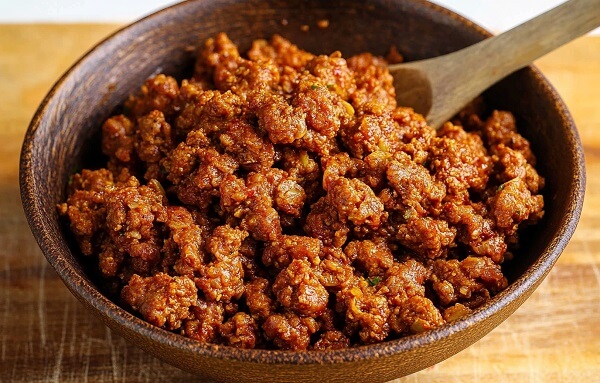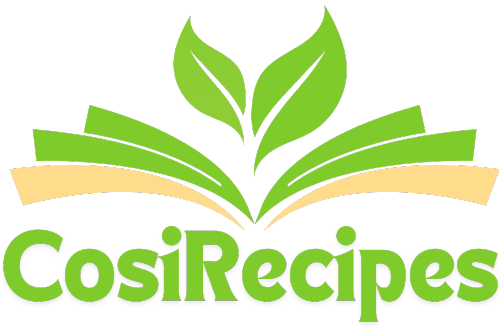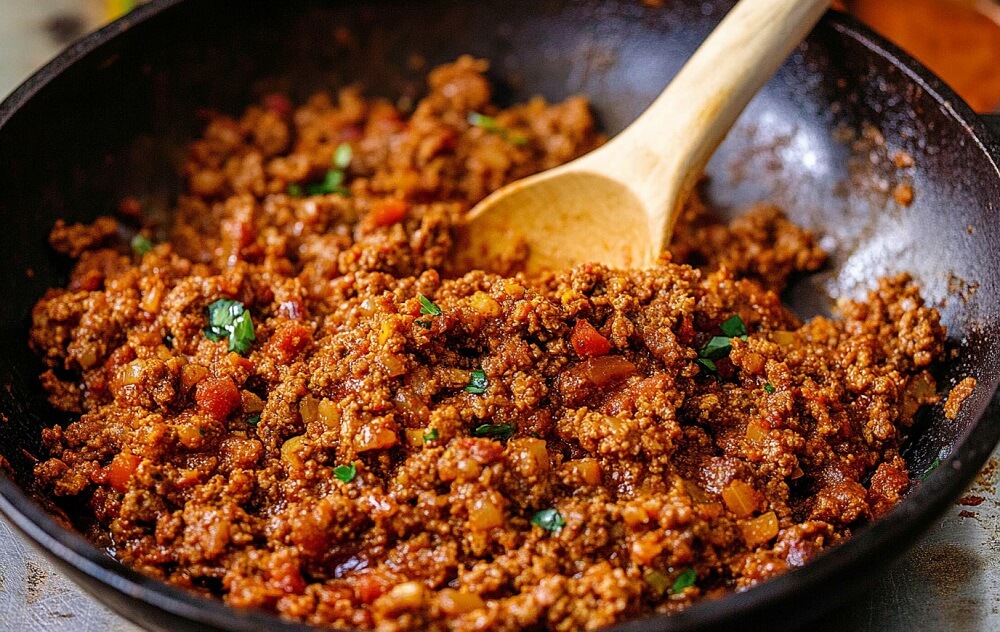Chorizo is a bold and flavorful sausage enjoyed in cuisines around the world. Knowing how to cook chorizo is key to unlocking its full potential, whether you’re frying, grilling, or baking it. This versatile ingredient comes in two main varieties: fresh Mexican chorizo, which is ideal for frying and mixing into recipes, and cured Spanish chorizo, perfect for slicing or adding to dishes like paella. In this guide, you’ll learn the best methods for cooking chorizo, along with delicious chorizo recipes that showcase its unique flavors.
This article will guide you through:
- How to fry chorizo to achieve the perfect balance of crispiness and tenderness.
- Exploring different chorizo recipes for every meal of the day.
- Mastering grilling chorizo techniques to elevate your barbecue game.
- Discovering the best chorizo dishes that showcase its versatility.
- Tips on cooking Mexican chorizo and incorporating it into your favorite meals.
- Learning how to work with Spanish sausage recipes.
- Expert advice on how to remove chorizo casing for effortless cooking.
- Ideas for quick chorizo recipes to save time without sacrificing flavor.
- Insights into chorizo health benefits for a guilt-free indulgence.
- Creative chorizo breakfast ideas to start your day with a flavorful punch.
With these tips and techniques, you’ll uncover the best ways to cook and enjoy chorizo, whether for a quick snack or a gourmet dish.
1. Understanding Chorizo
1.1 What Is Chorizo?
Chorizo is a highly flavorful sausage that has become a staple in many cuisines around the world. Originating in the Iberian Peninsula, this beloved sausage is known for its bold taste, which comes from a combination of paprika, garlic, and spices. While it has Spanish roots, variations of chorizo are found in different countries, each with distinct preparation methods and ingredients.
- Spanish chorizo: Cured and often smoked, it’s ready to eat and typically sliced into dishes like paella or tapas. Its flavor is dominated by smoked paprika, giving it a rich, deep profile.
- Mexican chorizo: Fresh and uncooked, this version is spiced with chili peppers, making it perfect for frying and incorporating into recipes like tacos and scrambled eggs.
1.2 Types of Chorizo
Chorizo comes in several types that cater to different culinary needs:
- Fresh (Mexican chorizo): Ideal for frying, this version is versatile and works well in recipes like breakfast chorizo ideas or quick chorizo recipes.
- Cured (Spanish chorizo): Great for slicing, it’s commonly used in charcuterie boards and Spanish sausage recipes.
- Sweet or spicy options: Depending on your preference, you can choose mild varieties or opt for spicy chorizo for an added kick.
1.3 Key Ingredients in Chorizo
The key to chorizo’s distinctive taste lies in its ingredients:
- Paprika: Adds smoky or sweet notes, depending on the variety.
- Garlic: Enhances the depth of flavor.
- Pork: The primary protein base, ensuring a rich and hearty texture.
- Regional spices: Variations may include oregano, chili, or vinegar, depending on the region.

2. Preparations Before Cooking Chorizo
2.1 Choosing the Right Type of Chorizo
Selecting the right chorizo depends on the dish you’re preparing:
- Use fresh chorizo for recipes that require frying or incorporation into stews, casseroles, or eggs.
- Opt for cured chorizo when you need a ready-to-eat option for slicing or adding to charcuterie boards.
2.2 Equipment Needed
The right tools can enhance your cooking process and ensure better results:
- Non-stick pans: Ideal for frying Mexican chorizo without sticking.
- Grills or cast iron: Perfect for achieving a smoky flavor with grilling chorizo techniques.
- Knives: Essential for slicing cured chorizo evenly.
2.3 Pre-Cooking Tips
Before cooking chorizo, follow these essential steps:
- Proper storage: Keep fresh chorizo refrigerated and consume it before its expiration date. Store cured chorizo in a cool, dry place.
- Preparation steps: Remove fresh chorizo from its casing when frying to allow it to crumble evenly.
- Removing casing: For cured chorizo, peel off the outer casing before slicing to enhance its texture and presentation.
With the right preparation, your chorizo will be ready to cook and bring bold flavors to any dish.
Best Cooking Methods for Chorizo
3.1 Frying Chorizo
Frying is one of the most popular methods for preparing fresh Mexican chorizo. This technique enhances its flavor, creating a crispy yet tender texture that pairs perfectly with a wide range of dishes.
Step-by-Step Guide to Frying Fresh Chorizo
- Prepare the chorizo:
- Remove the casing if the recipe requires crumbled chorizo.
- Keep the casing intact if you prefer to cook whole sausages.
- Preheat the pan:
- Use a non-stick or cast-iron skillet to prevent sticking.
- Heat the pan over medium heat for even cooking.
- Add the chorizo:
- Place the chorizo in the pan without adding extra oil, as it releases its own fat.
- Stir or flip frequently to ensure even cooking.
- Cook until done:
- Fresh chorizo typically takes 8-12 minutes to cook through.
- Ensure it reaches an internal temperature of 160°F (71°C).
Tips for Achieving a Crispy Texture
- Use a flat spatula to press the chorizo slightly, encouraging it to crisp up.
- Drain excess fat during cooking if it becomes too greasy.
- Avoid overcrowding the pan to allow proper browning.
Common Mistakes to Avoid
- Cooking on high heat: This may burn the chorizo’s exterior while leaving the inside undercooked.
- Failing to remove the casing for crumbled recipes.
- Adding extra oil, which can make the dish overly greasy.
3.2 Grilling Chorizo
Grilling chorizo adds a smoky, charred flavor that’s perfect for outdoor barbecues or hearty dishes. This method works best with cured Spanish chorizo or fresh sausages.
Preparing Chorizo for Grilling
- For fresh chorizo:
- Keep the casing intact to prevent it from falling apart on the grill.
- Pierce the casing slightly to release steam and prevent bursting.
- For cured chorizo:
- Slice the sausage into thick rounds or grill whole for maximum smokiness.
Best Grilling Temperatures and Techniques
- Preheat the grill:
- Use medium heat for fresh chorizo to ensure even cooking.
- High heat works well for cured chorizo to achieve a quick sear.
- Cook to perfection:
- Place fresh chorizo on the grill and cook for 12-15 minutes, turning frequently.
- Grill cured chorizo for 3-5 minutes per side, depending on the thickness.
- Add smoky flavors:
- Use wood chips or charcoal for a rich, smoky aroma.
- Brush the chorizo with olive oil or marinade for extra flavor.
Tips for Grilling Success
- Avoid overcooking, as this can make the chorizo dry.
- Serve immediately to enjoy the full flavor and juicy texture.
3.3 Baking Chorizo
Baking is a convenient and hands-off method, especially for cured chorizo. It’s ideal for recipes that require less attention or when cooking in large quantities.
Baking Temperature and Time Guidelines
- Preheat the oven:
- Set the oven to 375°F (190°C).
- Prepare the chorizo:
- Place whole sausages or sliced pieces on a baking sheet lined with parchment paper.
- For extra flavor, drizzle with olive oil or sprinkle with herbs.
- Bake to perfection:
- Cured chorizo slices: Bake for 10-12 minutes or until slightly crisp.
- Fresh chorizo: Bake for 20-25 minutes, turning halfway through.
Why Bake Chorizo?
- Produces evenly cooked sausages with minimal effort.
- Retains the chorizo’s natural flavors without additional fat.
3.4 Boiling or Poaching Chorizo
Boiling or poaching chorizo is a less common but useful technique for recipes requiring tender and juicy sausage.
When and Why to Use This Method
- Ideal for fresh chorizo that will be used in stews or casseroles.
- Helps reduce excess grease and ensures even cooking.
Steps for Boiling Fresh Chorizo
- Prepare the pot:
- Fill a pot with water or broth to enhance flavor.
- Bring the liquid to a gentle simmer.
- Cook the chorizo:
- Add whole sausages to the simmering liquid.
- Cook for 10-15 minutes until the internal temperature reaches 160°F (71°C).
- Finish with another method:
- Fry or grill the boiled chorizo briefly to achieve a crispy exterior.
3.5 Cooking Chorizo with Other Ingredients
Chorizo shines as a flavorful addition to stews, casseroles, and paellas. Its rich, smoky flavor enhances the dish while infusing it with color and spice.
Incorporating Chorizo into Recipes
- Stews and Soups:
- Add chorizo early to release its oils and flavor the base.
- Pair with vegetables, beans, or lentils for a hearty meal.
- Casseroles:
- Use cooked chorizo slices to layer flavor into casseroles.
- Combine with potatoes, rice, or pasta for a filling dish.
- Paellas:
- Cured Spanish chorizo is a classic ingredient in paella.
- Sauté it with onions, garlic, and spices before adding the rice and broth.
These cooking methods ensure that your chorizo recipes are bursting with flavor and perfectly cooked. Whether you’re frying, grilling, baking, or combining chorizo with other ingredients, you’ll enjoy its smoky, spicy essence in every bite.
4. Recipes Featuring Chorizo
4.1 Classic Chorizo and Eggs
A breakfast favorite, chorizo and eggs is a simple yet satisfying dish that packs bold flavors into every bite.
Ingredients
- 4 oz fresh Mexican chorizo (casing removed)
- 4 large eggs
- 1 tbsp olive oil (if needed)
- Salt and pepper to taste
- Optional toppings: chopped cilantro, diced tomatoes, or shredded cheese
Step-by-Step Instructions
- Prepare the chorizo:
- Heat a non-stick skillet over medium heat.
- Add the chorizo and cook for 5-7 minutes, breaking it into small crumbles with a spatula. Ensure it’s fully cooked.
- Whisk the eggs:
- In a bowl, whisk the eggs with a pinch of salt and pepper.
- Set aside while the chorizo cooks.
- Combine eggs and chorizo:
- If the chorizo has released a lot of grease, drain excess fat.
- Reduce heat to low, then pour the whisked eggs into the skillet with the chorizo.
- Gently stir with a spatula until the eggs are fully cooked and scrambled.
- Serve and garnish:
- Plate the chorizo and eggs, and garnish with optional toppings.
- Pair with warm tortillas or toast for a hearty breakfast.
Pro Tip: For added texture, sauté diced onions or bell peppers with the chorizo before adding the eggs.
4.2 Chorizo Paella
Paella is a traditional Spanish dish that showcases the rich, smoky flavors of cured chorizo.
Ingredients
- 2 cups Arborio rice
- 4 oz Spanish chorizo, sliced
- 4 cups chicken or seafood broth
- 1/2 tsp saffron threads (optional)
- 1 medium onion, diced
- 1 red bell pepper, diced
- 2 garlic cloves, minced
- 1 cup diced tomatoes
- 1 cup frozen peas
- 8-10 large shrimp (optional)
- 2 tbsp olive oil
- Salt and pepper to taste
Cooking Tips for Perfect Paella
- Prepare the ingredients:
- Heat olive oil in a large, shallow pan over medium heat.
- Sauté the sliced chorizo until lightly crisp, then set aside.
- Cook the base:
- Add the onions, bell pepper, and garlic to the pan, cooking until soft.
- Stir in the diced tomatoes and cook for another 2-3 minutes.
- Add the rice and saffron:
- Pour the rice into the pan, stirring to coat it with the tomato mixture.
- Add the saffron threads (if using) for authentic flavor.
- Simmer the paella:
- Gradually pour in the broth, stirring gently to combine.
- Arrange the chorizo and shrimp (if using) on top, and simmer on low heat for 20-25 minutes. Do not stir, as this helps create the crusty bottom layer called “socarrat.”
- Finish with peas:
- Sprinkle the frozen peas over the top during the last 5 minutes of cooking.
- Let the paella rest for 5 minutes before serving.
Pro Tip: Use a paella pan or a wide, shallow skillet to ensure even cooking.
4.3 Chorizo Tacos
Chorizo tacos are a must-try Mexican dish that combines bold, spicy flavors with fresh toppings for an irresistible meal.
Ingredients
- 8 oz fresh Mexican chorizo (casing removed)
- 8 small corn or flour tortillas
- 1 cup shredded lettuce
- 1/2 cup diced tomatoes
- 1/4 cup diced onion
- 1/4 cup chopped cilantro
- 1/2 cup crumbled queso fresco or shredded cheese
- Lime wedges for serving
Serving Suggestions
- Cook the chorizo:
- Heat a skillet over medium heat.
- Add the chorizo and cook for 7-10 minutes, breaking it apart into crumbles until fully cooked.
- Warm the tortillas:
- Heat the tortillas on a dry skillet or directly over a flame for 10-15 seconds on each side, until warm and pliable.
- Assemble the tacos:
- Divide the cooked chorizo among the tortillas.
- Top each taco with lettuce, tomatoes, onions, cilantro, and queso fresco.
- Serve and enjoy:
- Squeeze fresh lime juice over the tacos for an extra burst of flavor.
- Pair with salsa or guacamole for added richness.
Pro Tip: Add a layer of refried beans or rice to the tacos for a more filling meal.
4.4 Chorizo Pasta
When you need a quick and easy weeknight dinner, chorizo pasta is the perfect choice. This recipe combines the smoky spice of chorizo with a creamy sauce to create a crowd-pleaser.
Ingredients
- 8 oz penne or spaghetti
- 4 oz fresh or cured chorizo, diced
- 1/2 cup heavy cream
- 1/2 cup grated Parmesan cheese
- 1 tbsp olive oil
- 2 garlic cloves, minced
- Salt and pepper to taste
- Fresh parsley for garnish
Instructions
- Cook the pasta:
- Boil the pasta in salted water according to the package instructions.
- Reserve 1/2 cup of pasta water, then drain.
- Cook the chorizo:
- Heat olive oil in a skillet over medium heat.
- Add the chorizo and cook until browned and crispy.
- Prepare the sauce:
- Reduce the heat to low and stir in the minced garlic, cooking for 1 minute.
- Add the heavy cream and Parmesan, stirring until the sauce thickens.
- Combine and serve:
- Toss the cooked pasta in the skillet with the sauce, adding reserved pasta water as needed to reach the desired consistency.
- Garnish with fresh parsley and serve immediately.
Pro Tip: Pair this dish with a side of garlic bread for a complete meal.
These recipes show the incredible versatility of chorizo. From hearty breakfasts to elegant dinners, each dish highlights the bold and smoky flavors of this beloved sausage.
Tips and Tricks for Cooking Chorizo Perfectly
Cooking chorizo to perfection requires a combination of proper techniques and avoiding common mistakes. These tips will ensure you maximize flavor while achieving the ideal texture.
Common Cooking Mistakes and How to Avoid Them
- Overcooking fresh chorizo:
- Fresh chorizo needs to be cooked thoroughly but not overdone, as it can become dry. Use medium heat and cook until the internal temperature reaches 160°F (71°C).
- Skipping the casing removal:
- For crumbled chorizo recipes, always remove the casing to allow even cooking and better integration into your dish.
- Adding too much oil:
- Chorizo releases its own fat during cooking. Adding extra oil can make the dish overly greasy.
How to Reduce Grease Without Losing Flavor
- Drain excess fat:
- As chorizo cooks, it releases oil. Drain some of the fat midway through cooking, especially if you’re preparing a lighter dish.
- Pat with paper towels:
- After cooking, place the chorizo on paper towels to absorb any remaining grease.
- Use leaner chorizo:
- Opt for low-fat varieties or blend chorizo with lean meats for a healthier option.
Achieving the Perfect Balance of Crisp and Tenderness
- Control the heat:
- Start cooking chorizo on medium heat to ensure the inside is fully cooked, then finish on high heat to crisp the edges.
- Avoid overcrowding:
- Cook in small batches to allow proper browning.
- Use cast iron or non-stick pans:
- These pans help achieve an even, crispy texture without sticking.
Mastering these techniques will make every chorizo dish a flavorful success.
6. Nutritional Benefits and Considerations
Chorizo is rich in flavor and nutrients, but its high fat content requires mindful preparation to keep it healthy.
Calories, Protein Content, and Vitamins
- Calories:
- One serving (1 oz) of chorizo contains approximately 130-150 calories, depending on the variety.
- Protein:
- Chorizo is protein-rich, providing around 8-10 grams per serving, making it a great choice for energy and muscle building.
- Vitamins:
- It’s a good source of B vitamins, particularly B12, which supports nerve function and red blood cell production.
Healthier Cooking Methods to Reduce Fat
- Grilling or baking:
- These methods help render excess fat while maintaining chorizo’s smoky flavor.
- Pair with vegetables:
- Balance chorizo’s richness by combining it with nutrient-dense ingredients like bell peppers, spinach, or tomatoes.
- Portion control:
- Use chorizo as a flavor enhancer rather than the main ingredient, spreading its taste across dishes.
By incorporating these healthier methods, you can enjoy the bold flavors of chorizo while maintaining a balanced diet.
FAQs About Cooking Chorizo
What is the best way to cook chorizo without it sticking to the pan?
To prevent chorizo from sticking to the pan:
- Use a non-stick pan or a well-seasoned cast iron skillet.
- Heat the pan before adding the chorizo, as starting with a cold pan increases the chance of sticking.
- Avoid adding oil, as chorizo releases its own fat while cooking. If the pan seems too dry initially, use a small amount of olive oil.
Can you eat chorizo raw?
- Cured Spanish chorizo: Yes, this type of chorizo is ready-to-eat and doesn’t require cooking. It can be sliced and enjoyed as-is or added to cold dishes.
- Fresh Mexican chorizo: No, fresh chorizo must be cooked thoroughly to ensure it is safe to eat.
How do you know when chorizo is fully cooked?
- Fresh chorizo is cooked when it reaches an internal temperature of 160°F (71°C).
- The texture will firm up, and any pink color in the center will disappear. If frying, it should also develop a slightly crisp exterior.
What dishes pair well with chorizo?
Chorizo complements a wide range of dishes:
- Breakfast options: Scrambled eggs, hash browns, or breakfast burritos.
- Main courses: Tacos, paellas, or casseroles.
- Snacks: Serve cured chorizo with cheese and crackers for a quick appetizer.
What’s the difference between fresh and cured chorizo?
- Fresh chorizo (Mexican) is raw and requires cooking. It has a soft texture and is often used in tacos or as a filling.
- Cured chorizo (Spanish) is air-dried and ready to eat, offering a firmer texture and a smoky, paprika-rich flavor.
Conclusion
Chorizo is a versatile and flavorful ingredient that can elevate any dish. From frying and grilling to baking and poaching, there are numerous ways to cook chorizo, each offering unique textures and flavors.
Experimenting with chorizo-based recipes, such as chorizo tacos, paellas, or breakfast classics, allows you to explore its full culinary potential. Pair it with complementary ingredients like eggs, vegetables, or rice to create well-rounded dishes.
Whether you’re savoring the smoky depth of cured Spanish chorizo or the spicy kick of fresh Mexican chorizo, this sausage brings bold flavors to diverse cuisines. By mastering these cooking methods and incorporating chorizo into your meals, you’ll enjoy a truly satisfying dining experience every time.






